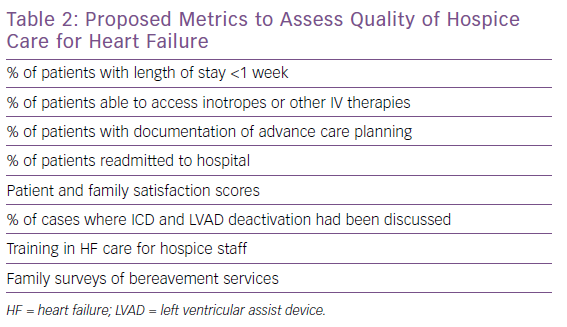
Those who work in medical lab technology analyze and test all fluids, tissues and cells of the human body. They help doctors diagnose and determine the effectiveness of treatment. While they often work in hospitals and clinics as well, they also may work in other settings like the federal government. Their job requires them to be meticulous and have high manual dexterity. They may also have to deal with biohazardous material. They may not have direct contact with patients depending upon the location.
Students are taught basic laboratory procedures as well as diagnostic tests. They may work alongside pathologists, who study cell and tissue samples. They can also be responsible for managing surgical teams. They can also be trained to prepare samples and take diagnostic pictures. They might even be trained in autopsies for deceased patients.
There are many job opportunities in medical lab technology. Although most positions require an associate degree in this area, some employers prefer those who have a bachelor's. Those with a bachelor's degree can expect to earn higher wages. Some jobs require certification, which can help increase your employment opportunities.

Specialists in medical lab technology might be of interest to people who work in phlebotomy or blood banking. They may also want to obtain general certifications. Numerous colleges and hospitals offer certificate programmes. Those interested in medical lab technology can learn more about these opportunities at Career Star. Alternatively, a few hospitals offer on-the-job training.
In a short time, you can earn a degree as a medical lab technician. Students may be able to complete the program in less than two years. After completing the program they can sit for American Society of Clinical Pathology’s certification examination. They may also be eligible in the future for general certifications, such American Association of Bioanalysts. Regardless of whether students complete their degree in two years or three, they will be well prepared for careers in this field.
Associate's degrees are the first step in your journey to a career working in medical lab technology. The American Medical Association and National Accrediting Agency for Clinical Laboratory Sciences have to accredit the degree. The earning potential of lab technicians can also be enhanced by having a bachelor's level degree.
Medical Laboratory Technology students may be eligible to apply for certification through the American Society of Clinical Pathology. They may also be eligible in general certifications such the American Association of Bioanalysts, or the American Medical Technologists. They can also apply to work in a blood bank or clinic.

Some students may be admitted into the program without a highschool diploma, depending upon the hospital's requirements. They will need approval from the admissions panel. The admissions committee will also need to approve them. Most students will complete lab experience through a clinical partner, which may be a hospital or private lab.
If you are interested in a career as a medical laboratory technician, the Advanced Certificate is for you. Individuals who meet certain requirements can enroll in this 15-credit accelerated program. The NYS Department of Education approved the program and it offers an alternative to a BSc in Clinical or Medical Laboratory Sciences.
FAQ
What happens if Medicare is not available?
Uninsured Americans will increase. Employers will be forced to terminate their employees' plans. Many seniors will be responsible for higher out-of–pocket expenses for prescription drugs, and other medical services.
What are the different types of healthcare systems available?
The first system, which is traditional and where patients are not allowed to choose who they see for their treatment, is the most popular. They go to hospital A if they need an operation, but otherwise, they might as well not bother because there is nothing available at all.
The second system is a fee-for-service system where doctors earn money based on how many tests, operations, and drugs they perform. You'll pay twice the amount if you don't pay enough.
A capitation system, which pays doctors based on how much they spend on care and not how many procedures they perform, is the third system. This encourages doctors and patients to choose less costly treatment options such as talk therapies over surgery.
What does it mean to "health promote"?
Health promotion is helping people live longer, stay well, and be healthier. It focuses on preventing sickness rather than treating existing conditions.
It also includes:
-
Right eating
-
Sleeping enough
-
exercising regularly
-
Being active and fit
-
Do not smoke
-
managing stress
-
Keep up with vaccinations
-
avoiding alcohol abuse
-
Regular checkups and screenings
-
How to manage chronic illness.
Who is responsible for the healthcare system?
It depends on how you look at it. Public hospitals may be owned by the government. Private companies may run private hospitals. Or a combination.
What is the difference in a doctor and a practitioner?
A doctor can be defined as someone who has completed medical training and is licensed. A physician is a specialist in one type of medicine.
Statistics
- For the most part, that's true—over 80 percent of patients are over the age of 65. (rasmussen.edu)
- Healthcare Occupations PRINTER-FRIENDLY Employment in healthcare occupations is projected to grow 16 percent from 2020 to 2030, much faster than the average for all occupations, adding about 2.6 million new jobs. (bls.gov)
- For instance, Chinese hospital charges tend toward 50% for drugs, another major percentage for equipment, and a small percentage for healthcare professional fees. (en.wikipedia.org)
- Foreign investment in hospitals—up to 70% ownership- has been encouraged as an incentive for privatization. (en.wikipedia.org)
- The health share of the Gross domestic product (GDP) is expected to continue its upward trend, reaching 19.9 percent of GDP by 2025. (en.wikipedia.org)
External Links
How To
What are the Four Health Systems?
Healthcare is a complex network that includes hospitals, clinics and pharmaceutical companies as well as insurance providers, government agencies, public officials and other organizations.
This infographic was created to help people understand the US healthcare system.
These are some key points.
-
Healthcare spending is $2 trillion annually, representing 17% of the GDP. That's more than twice the total defense budget!
-
Medical inflation reached 6.6% for 2015, more than any other category.
-
Americans spend an average of 9% on their health costs.
-
As of 2014, there were over 300 million uninsured Americans.
-
Although the Affordable Health Care Act (ACA), has been approved by Congress, it hasn't yet been fully implemented. There are still gaps in coverage.
-
A majority of Americans believe the ACA should be maintained.
-
The US spends more than any other nation on healthcare.
-
If every American had access to affordable healthcare, the total cost would decrease by $2.8 trillion annually.
-
Medicare, Medicaid, and private insurers cover 56% of all healthcare spending.
-
People don't have insurance for three reasons: they can't afford it ($25 Billion), don’t have enough time to search for it ($16.4 Billion), and don’t know about it ($14.7Billion).
-
There are two types: HMO (health maintenance organisation) and PPO [preferred provider organization].
-
Private insurance covers all services, including doctor, dentist, prescriptions, physical therapy, and many others.
-
Public programs provide hospitalization, inpatient surgery, nursing home care, long-term health care, and preventive services.
-
Medicare is a federal program which provides senior citizens with coverage for their health. It pays for hospital stays, skilled nursing facility stays, and home health visits.
-
Medicaid is a program of the federal and state governments that offers financial assistance to low-income people and families who earn too much to be eligible for other benefits.